Overview
On October 24, 2019, a strong closed 500mb low pushed across the Texas and Oklahoma Panhandles while a surface cold front provided a surge of cold air across the area. Lift along the surface boundary paired with the mid-level moisture allowed precipitation to form in the far northwestern Panhandles as early as 1AM Thursday morning on October 24, 2019. However, the main event was the banding that occurred across the central Panhandles from southwest to northeast. Enhanced lifting from the surface, interacting with the upper level system and very cold temperatures brought multiple heavy bands of snow along with thundersnow to the Panhandles. By 9 AM, the first sign of snow in the southwest Texas Panhandle appeared on radar reflectivity and this led to hours and hours of snowfall before ending the heavy banding around 2 AM Friday morning October 25, 2019. Lingering snow flurries continued in the far eastern Texas Panhandle through midday Friday. Snowfall amounts ranged from 1” in Boise City, Oklahoma as well as Cactus and Howardwick, Texas to 11” in Booker and Miami, Texas. A tricky aspect to this event were the strong winds of 25 to 35 mph with gusts up to 40 mph across the area, which made snowfall measurements very difficult due to blowing snow causing drifts of a foot or more in localized areas.
Snow Amounts
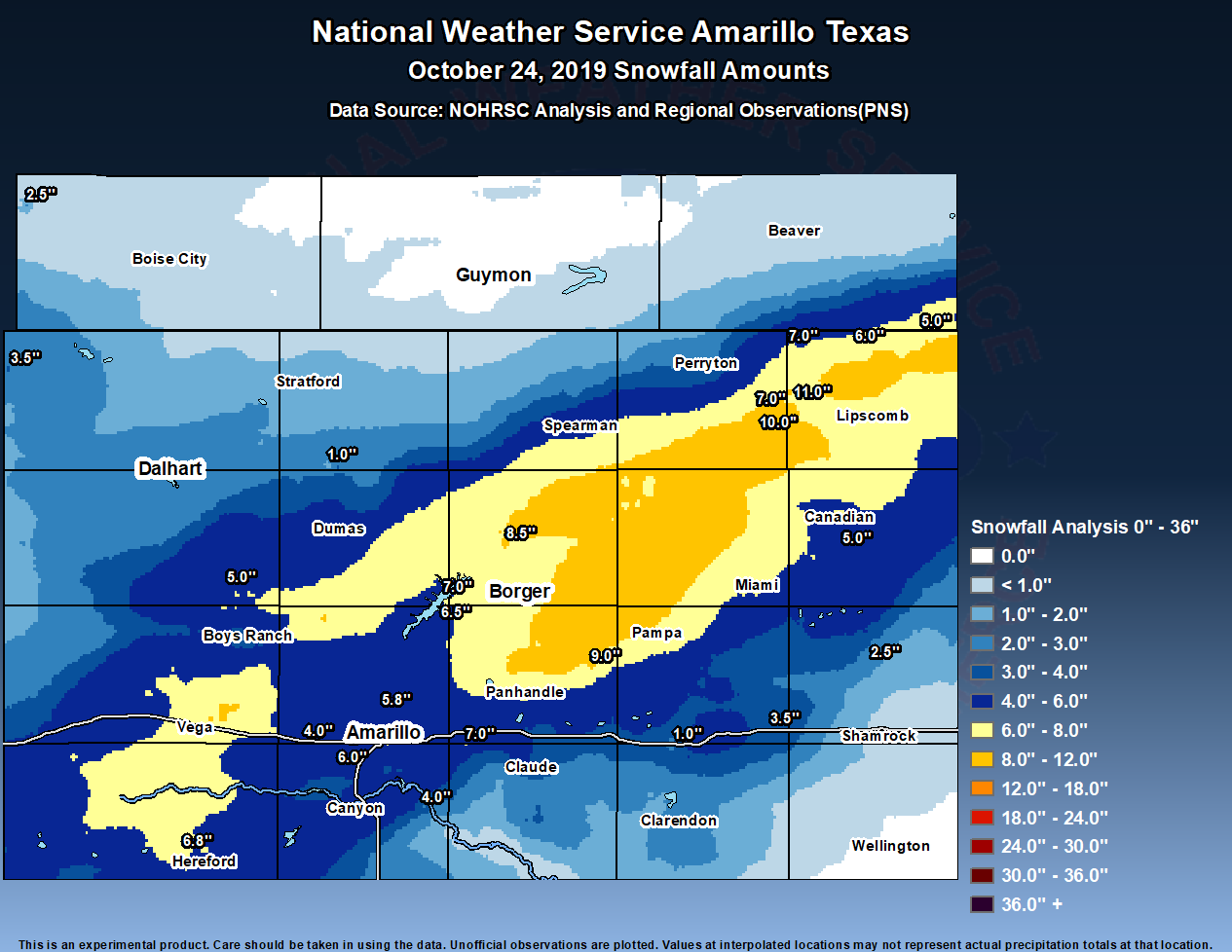
Photos & Video
 |
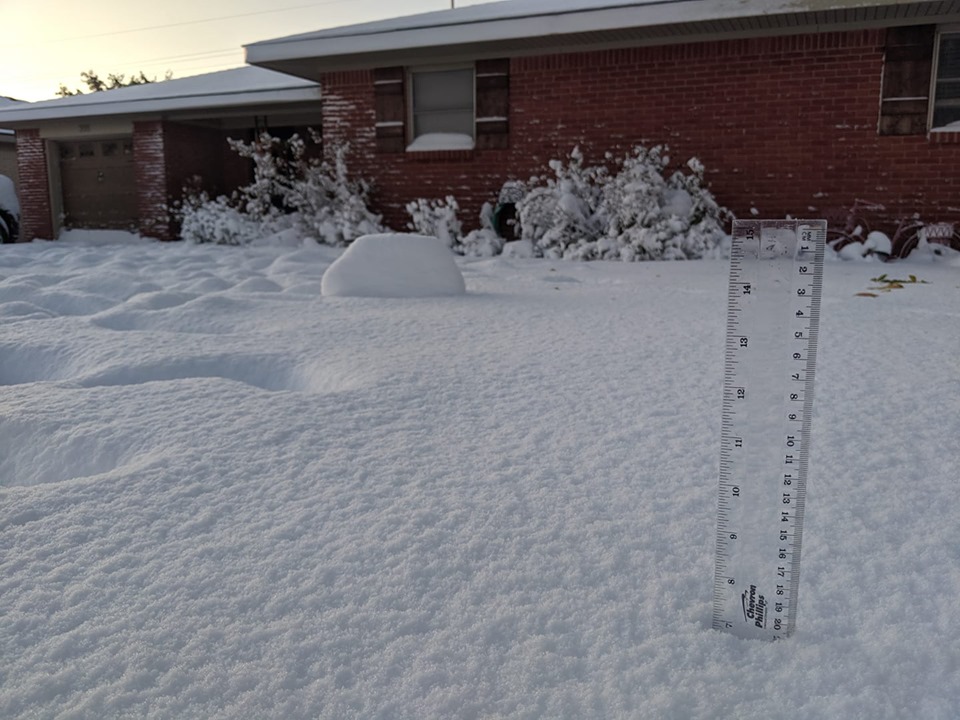 |
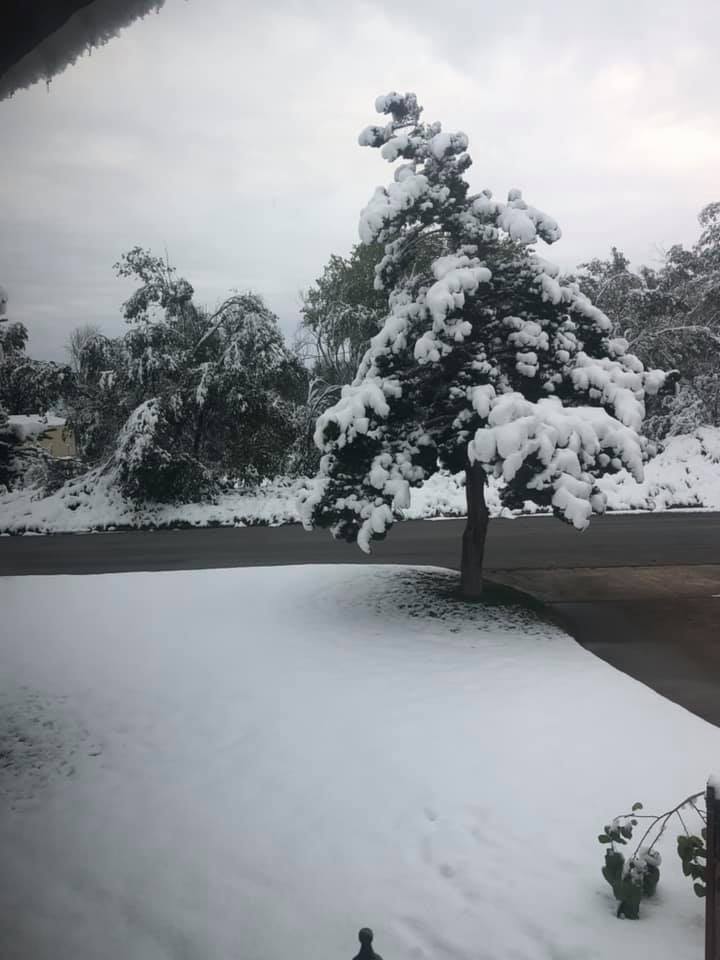 |
| East of Bishop Hills, Texas (Photo Credit: Lynn Braudt) |
7" measured in Borger, Texas (Photo Credit: Sarah Richter) |
Canadian, Texas (Photo Credit: Lindsey Pursley) |
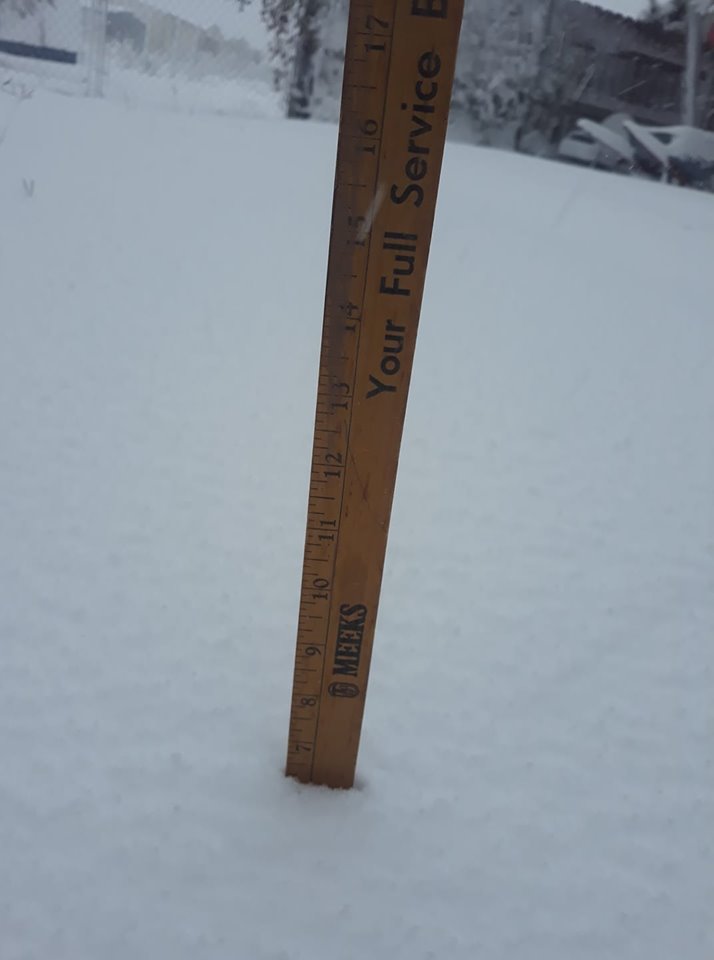 |
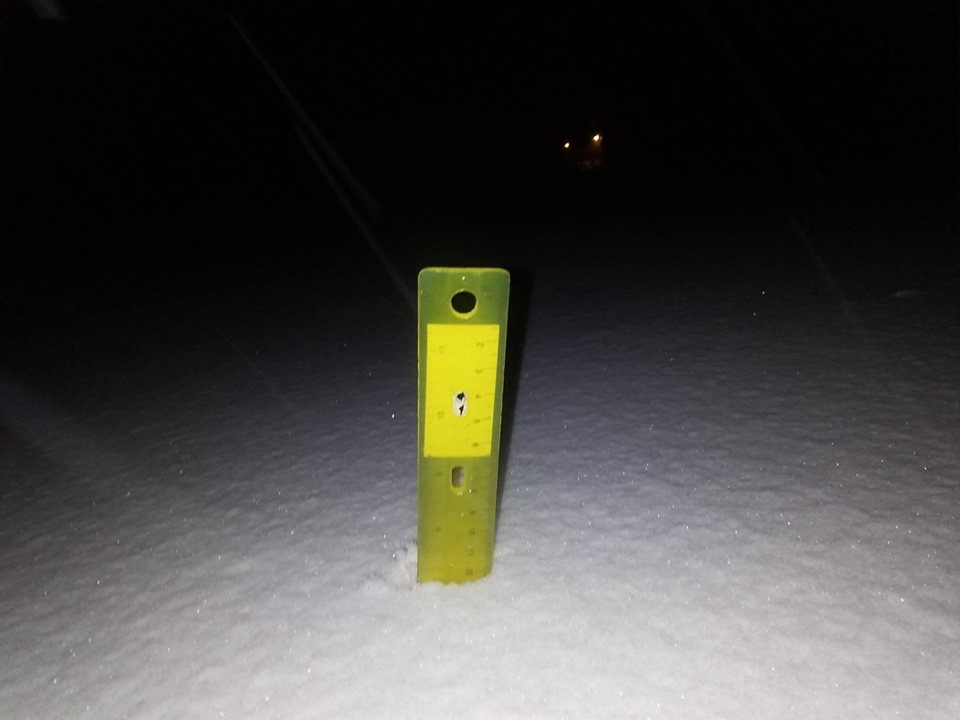 |
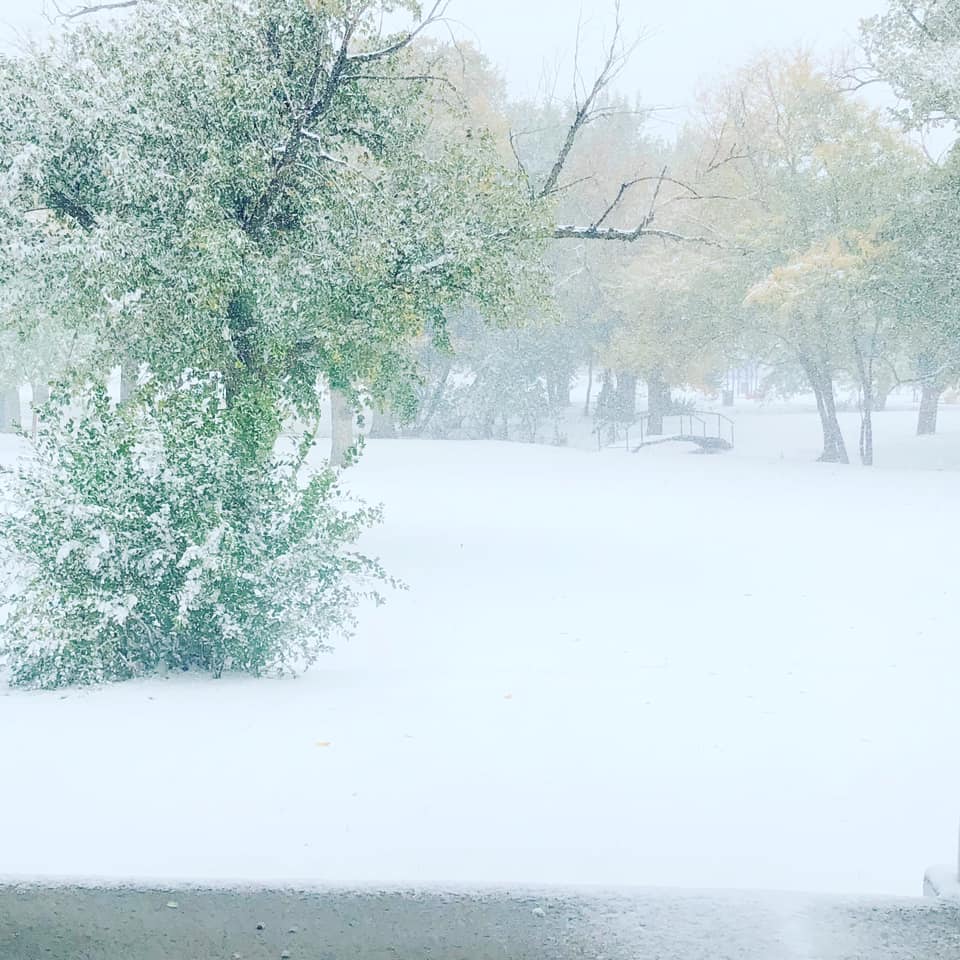 |
| 6.5" measured in Fritch, Texas (Photo Credit: Robin Alexander) |
7" measured in Washburn, Texas (Photo Credit: Brittaney Maddox) |
Hereford, Texas (Photo Credit: Clarissa Medrano) |
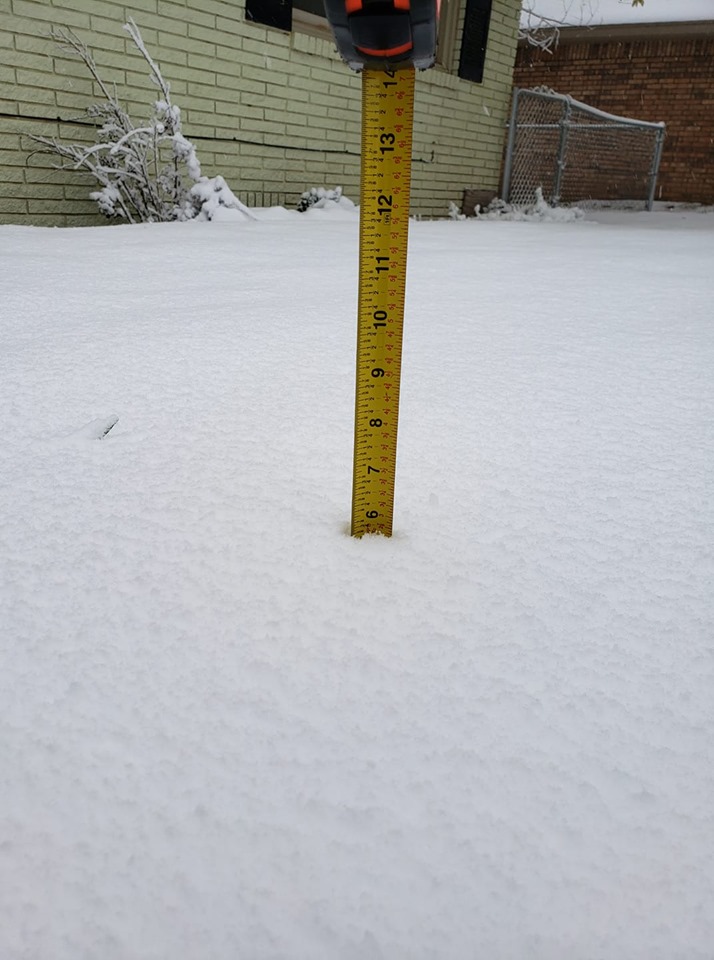 |
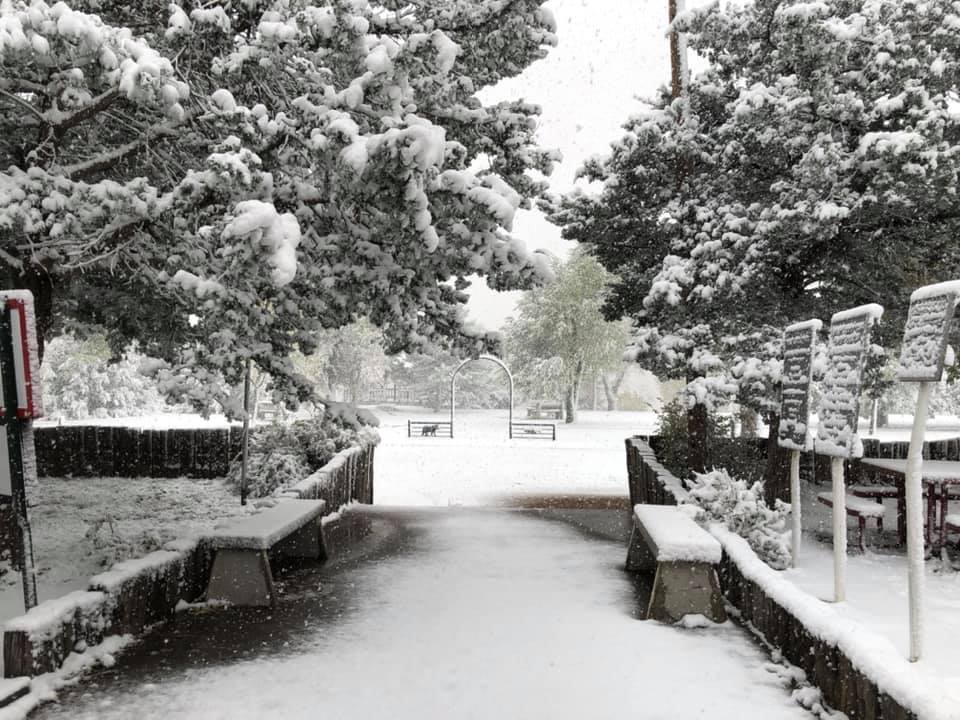 |
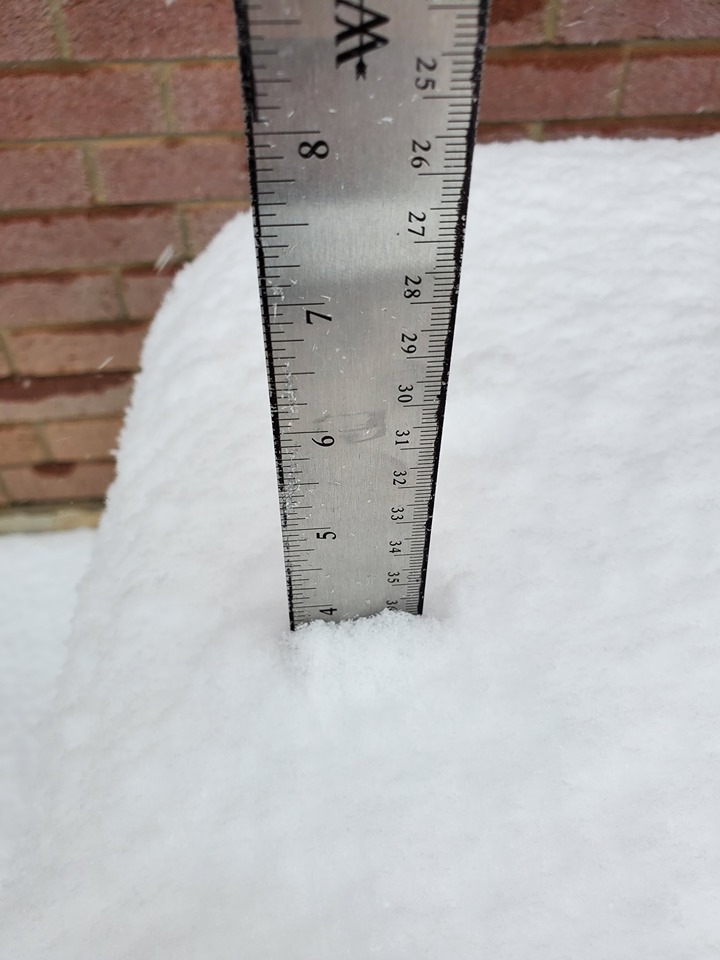 |
| 5.8" measured in Canyon, Texas (Photo Credit: Shelby Hanes) |
Lake Fryer, Texas (Photo Credit: Brenda Sparks Huddleston) |
4" measured in Amarillo, Texas (Photo Credit: Joshua Lewis) |
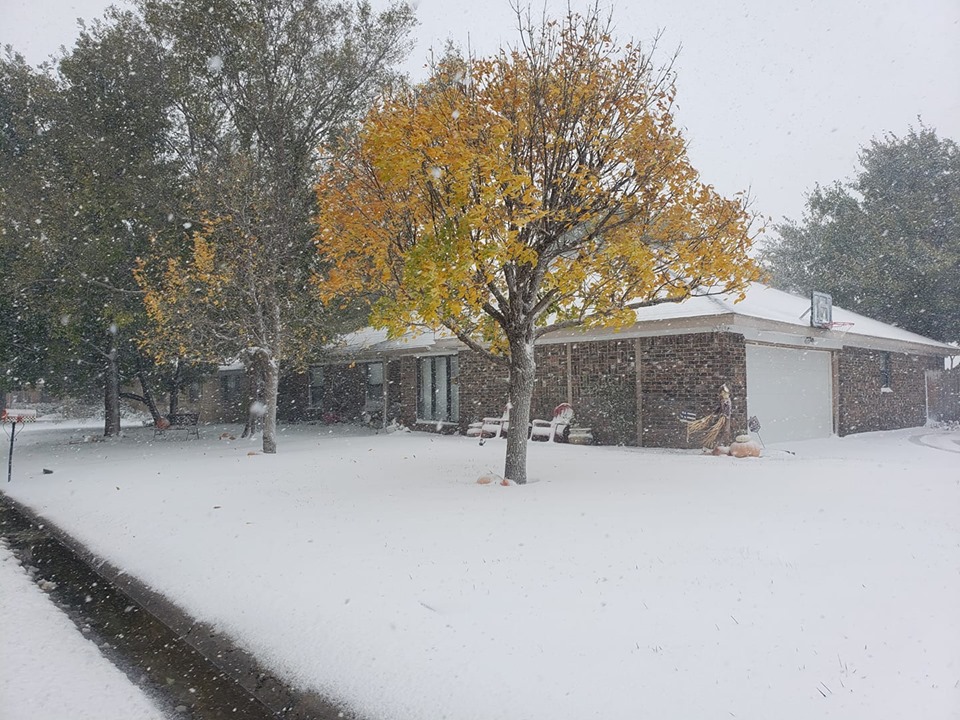 |
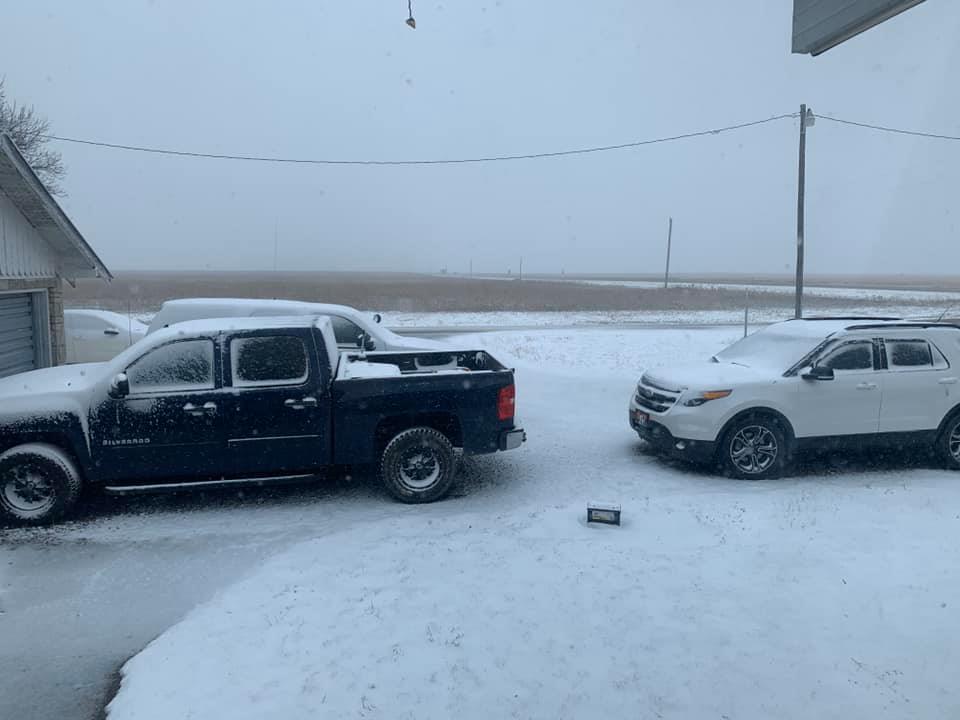 |
| Canyon, Texas (Photo Credit: Brandy Jolly Ellison) |
Boise City, Oklahoma (Photo Credit: Dustin Cox) |
Storm Reports
PRELIMINARY LOCAL STORM REPORT...SUMMARY NATIONAL WEATHER SERVICE AMARILLO TX 306 PM CDT FRI OCT 25 2019 ..TIME... ...EVENT... ...CITY LOCATION... ...LAT.LON... ..DATE... ....MAG.... ..COUNTY LOCATION..ST.. ...SOURCE.... ..REMARKS.. 0917 AM SNOW BOISE CITY 36.73N 102.51W 10/24/2019 E1.0 INCH CIMARRON OK EMERGENCY MNGR 0917 AM SNOW KENTON 36.90N 102.97W 10/24/2019 M2.5 INCH CIMARRON OK EMERGENCY MNGR . 0430 PM SNOW DALHART 36.06N 102.52W 10/24/2019 M2.0 INCH DALLAM TX CO-OP OBSERVER DALHART COOP MEASURED 2 INCHES OF SNOW, AND SNOW HAS PRETTY MUCH ENDED. 0715 PM SNOW 1 SE BORGER 35.65N 101.39W 10/24/2019 M5.5 INCH HUTCHINSON TX PUBLIC PICTURE OF 5.5 INCH SNOW DEPTH FROM SOUTHEAST BORGER. 0736 PM SNOW SPEARMAN 36.19N 101.19W 10/24/2019 E2.5 INCH HANSFORD TX TRAINED SPOTTER TWO TO TWO AND A HALF INCHES HAS BEEN ESTIMATED TO HAVE FALLEN. SNOWFALL IS MOVING EAST OUT OF THE AREA WITH A CLEARING BEHIND. 0900 PM SNOW HEREFORD 34.82N 102.40W 10/24/2019 M4.0 INCH DEAF SMITH TX LAW ENFORCEMENT SHERIFF OFFICE REPORTED SEVERAL AREAS IN AND AROUND HEREFORD HAD GOTTEN 4 INCHES OF SNOW FOR THE EVENT. SNOW IS ENDING IN HEREFORD. 0906 PM SNOW 2 N CACTUS 36.07N 102.01W 10/24/2019 E1.0 INCH SHERMAN TX LAW ENFORCEMENT SHERIFF OFFICE REPORTED ABOUT A QUARTER OF AN INCH IN STRATFORD, BUT FURTHER SOUTH NEAR CACTUS GOT ABOUT AN INCH OF SNOW. 0915 PM SNOW 5 SW AMARILLO 35.15N 101.87W 10/24/2019 M6.0 INCH RANDALL TX NWS EMPLOYEE STORM TOTAL. 0916 PM SNOW 4 SSW AMARILLO 35.14N 101.86W 10/24/2019 M5.6 INCH RANDALL TX NWS EMPLOYEE 5.6 INCHES OF SNOWFALL MEASURED AND THE SNOW HAS STOPPED. 0930 PM SNOW 3 E CANYON 34.98N 101.87W 10/24/2019 M5.8 INCH RANDALL TX NWS EMPLOYEE NWS EMPLOYEE MEASURED 5.8 AS A FINAL SNOW AMOUNT AS VERY LIGHT SNOW IS FALLING AND WILL BE ENDING SOON. 1000 PM SNOW 10 N HOWARDWICK 35.18N 100.91W 10/24/2019 E1.0 INCH DONLEY TX TRAINED SPOTTER SPOTTER REPORTED 1 INCH OF SNOW WHILE RETURNING TRAVELING ALONG TX HIGHWAY 70. 1030 PM SNOW BOOKER 36.28N 100.54W 10/24/2019 M7.0 INCH LIPSCOMB TX EMERGENCY MNGR EMERGENCY MANAGER REPORTED 7 INCHES OF SNOW. 1100 PM SNOW 4 W AMARILLO 35.20N 101.87W 10/24/2019 M6.0 INCH POTTER TX PUBLIC MEASURED IN MULTIPLE SPOTS, AVERAGED TO 6 INCHES. 1100 PM SNOW CANYON 34.98N 101.92W 10/24/2019 M5.8 INCH RANDALL TX PUBLIC FACEBOOK PICTURE OF MEASURED SNOW IN CANYON. 1100 PM SNOW WASHBURN 35.18N 101.57W 10/24/2019 M7.0 INCH ARMSTRONG TX PUBLIC FACEBOOK PICTURE SHOWING 7 INCHES OF MEASURED SNOW. 1124 PM SNOW 8 SE SLAPOUT 36.54N 100.01W 10/24/2019 E5.0 INCH BEAVER OK PUBLIC REPORT EMAILED TO THE OFFICE, WITH A PICTURE SUGGESTS 4 TO 6 INCHES POSSIBLE. ELEVATED SURFACES LOOK TO HAVE 6 INCHES. 1205 AM SNOW PERRYTON 36.39N 100.80W 10/25/2019 E3.0 INCH OCHILTREE TX LAW ENFORCEMENT STORM TOTAL. 1232 AM SNOW MIAMI 35.69N 100.64W 10/25/2019 E11.0 INCH ROBERTS TX LAW ENFORCEMENT STORM TOTAL. 0112 AM SNOW 6 ENE AMARILLO 35.24N 101.72W 10/25/2019 M5.5 INCH POTTER TX OFFICIAL NWS OBS STORM TOTAL. 0126 AM SNOW DARROUZETT 36.45N 100.33W 10/25/2019 M6.0 INCH LIPSCOMB TX LAW ENFORCEMENT STORM TOTAL. 0700 AM SNOW BORGER 35.66N 101.40W 10/25/2019 M6.5 INCH HUTCHINSON TX TRAINED SPOTTER OFFICIAL OBSERVER IN BORGER MEASURED 6.5 INCHES. 0700 AM SNOW CHANNING 35.68N 102.33W 10/25/2019 M5.0 INCH HARTLEY TX PUBLIC . 0700 AM SNOW CLAUDE 35.11N 101.36W 10/25/2019 M5.0 INCH ARMSTRONG TX EMERGENCY MNGR EMERGENCY MANAGER MEASURED 5 INCHES OF SNOW. 0700 AM SNOW FRITCH 35.64N 101.60W 10/25/2019 M6.5 INCH HUTCHINSON TX PUBLIC FACEBOOK REPORT OF 6.5 INCHES OF MEASURED SNOW. 0700 AM SNOW MCLEAN 35.23N 100.60W 10/25/2019 M3.5 INCH GRAY TX PUBLIC FACEBOOK PICTURE OF 3.5 INCHES. 0700 AM SNOW STINNETT 35.82N 101.44W 10/25/2019 M8.5 INCH HUTCHINSON TX PUBLIC FACEBOOK PICTURE OF 8.5 INCHES MEASURED IN STINNETT. 0700 AM SNOW WHEELER 35.44N 100.28W 10/25/2019 E2.5 INCH WHEELER TX EMERGENCY MNGR APPROXIMATELY 2.5 INCHES OF ACCUMULATED SNOW REPORTED BY COUNTY EM. 0800 AM SNOW 12 S BOOKER 36.28N 100.54W 10/25/2019 M11.0 INCH LIPSCOMB TX PUBLIC FACEBOOK PICTURE OF 11 INCHES OF SNOW. 0800 AM SNOW BOYS RANCH 35.51N 102.25W 10/25/2019 M4.0 INCH OLDHAM TX PUBLIC SNOW OBSERVATION TAKEN FROM BOYS RANCH. 0800 AM SNOW 7 S CANADIAN 35.81N 100.38W 10/25/2019 M5.0 INCH HEMPHILL TX FIRE DEPT/RESCUE CANADIAN FIRE CHIEF MEASURED 5 INCHES. 0800 AM SNOW 21 ESE CANADIAN 35.79N 100.04W 10/25/2019 M3.5 INCH HEMPHILL TX FIRE DEPT/RESCUE . 0800 AM SNOW DUMAS 35.86N 101.96W 10/25/2019 M4.0 INCH MOORE TX BROADCAST MEDIA BROADCAST MEDIA PASSED ON REPORT OF 4 INCHES IN DUMAS. 0800 AM SNOW 3 NW PALO DURO CANYON 34.98N 101.71W 10/25/2019 M4.0 INCH RANDALL TX PUBLIC FACEBOOK PICTURE RECEIVED OF 4 INCHES OF SNOW AT THE RIM OF PALO DURO CANYON. 0800 AM SNOW WOLF CREEK PARK 36.21N 100.65W 10/25/2019 M10.0 INCH OCHILTREE TX PUBLIC WOLF CREEK PARK STAFF MEASURED 10 INCHES THIS MORNING. 0832 AM SNOW VEGA 35.25N 102.43W 10/25/2019 M8.0 INCH OLDHAM TX TRAINED SPOTTER . 0838 AM SNOW BUSHLAND 35.19N 102.06W 10/25/2019 M4.0 INCH POTTER TX PUBLIC FACEBOOK REPORT OF 4 INCHES IN BUSHLAND. 0848 AM SNOW 3 NW AMARILLO 35.23N 101.86W 10/25/2019 M5.5 INCH POTTER TX PUBLIC FACEBOOK PICTURE OF 5.5 INCHES MEASURED IN NORTHERN AMARILLO. 0848 AM SNOW WHITE DEER 35.43N 101.17W 10/25/2019 M9.0 INCH CARSON TX PUBLIC FACEBOOK PICTURE OF 9 INCHES OF SNOW. 0851 AM SNOW 1 E LAKE MEREDITH 35.65N 101.64W 10/25/2019 M7.0 INCH MOORE TX COUNTY OFFICIAL CANADIAN MUNICIPAL WATER AUTHORITY OFFICE MEASURED 7 INCHES. 0855 AM SNOW PANHANDLE 35.35N 101.38W 10/25/2019 M7.0 INCH CARSON TX TRAINED SPOTTER SPOTTER MEASURED 7 INCHES OF SNOW SHORTLY AFTER THE EVENT ENDED.
 |
Media use of NWS Web News Stories is encouraged! Please acknowledge the NWS as the source of any news information accessed from this site. |
 |